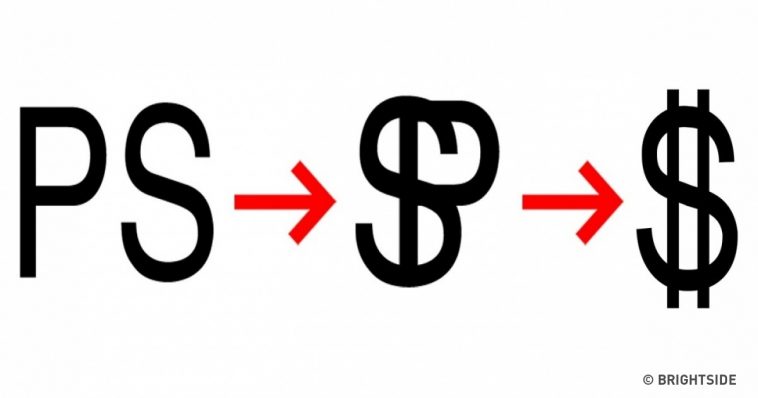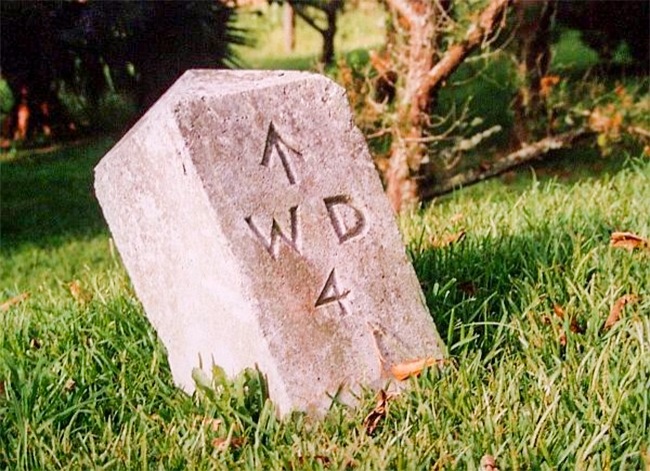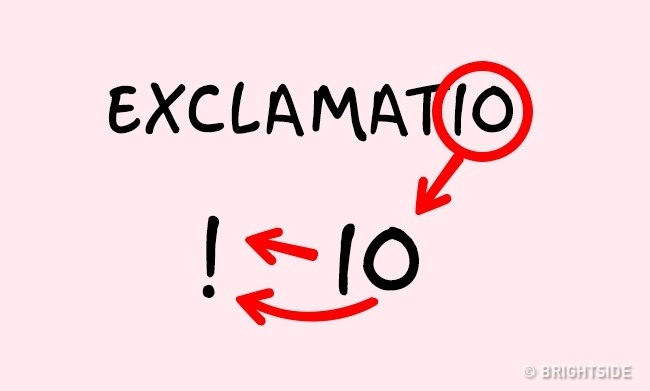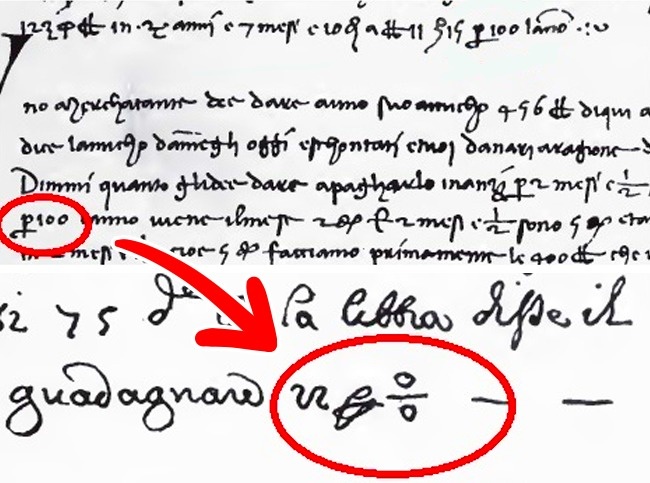7 Famous Symbols Very Few People Know the Origins of
Every day, we encounter a multitude of symbols and signs. But few people know where most of them come from.
FunnyModo decided it was time to investigate and took a look at seven famous symbols whose origins have remained shrouded in mystery until now.
The Question Mark
In Latin, the word “questio“ was inserted at the end of sentences to indicate a question. To save space, this was shortened to ”qo,“ and later the “o” was placed beneath the ”q.“ The ”q” became a hook shape, and the “o” simply a dot.
The Arrow
The arrow symbol is from ancient Greece: it was used to indicate a particular direction. Footprint symbols indicated the presence of a brothel, but the rain washed them away, leaving something like an arrow.
The Dollar Sign
There are several ideas as to where this symbol came from:
- In the Middle Ages, the most popular currency was the Spanish real, denoted as “PS.“ Eventually, only the vertical line of the ”P“ was left, written over the “S.”
- The ”S“ is the Spanish coat of arms.
- During the colonial era, the Spanish marked American gold ingots with an ”S.” Upon arrival, the “S” was marked with a vertical line, and another vertical line if returned.
The Exclamation Mark
This symbol probably comes from the Latin word “exclamatio,“ placed at the end of sentences to express joy. It was abbreviated to ”I“ and “O,” written on top of each other. This eventually became the ”!” used today.
The Infinity Symbol
It was first used by John Wallis in 1655, though no one knows what inspired its design. Some think it was derived from the Greek letter omega (ω); others think it came from the Roman numeral for 1,000: “CIƆ“ or ”CƆ.”
The Percentage Symbol
The word “percent“ comes from the Latin ”per centum“ (“by the hundred”). This became ”per cento,“ then ”per 100,” “p cento,” and later “pc-о.“ ”pc” gradually became the symbol “o/o” before turning into what we use today.
The Peace Gesture
This gesture was first used during the Hundred Years War between England and France when the French threatened to cut off the fingers of English archers alongside their bow case. The English began to raise their fingers in the “V“ sign (”victory”) to indicate their fingers were still in place. During WWII, Winston Churchill revived the gesture, turning it into a symbol of peace.












Comments